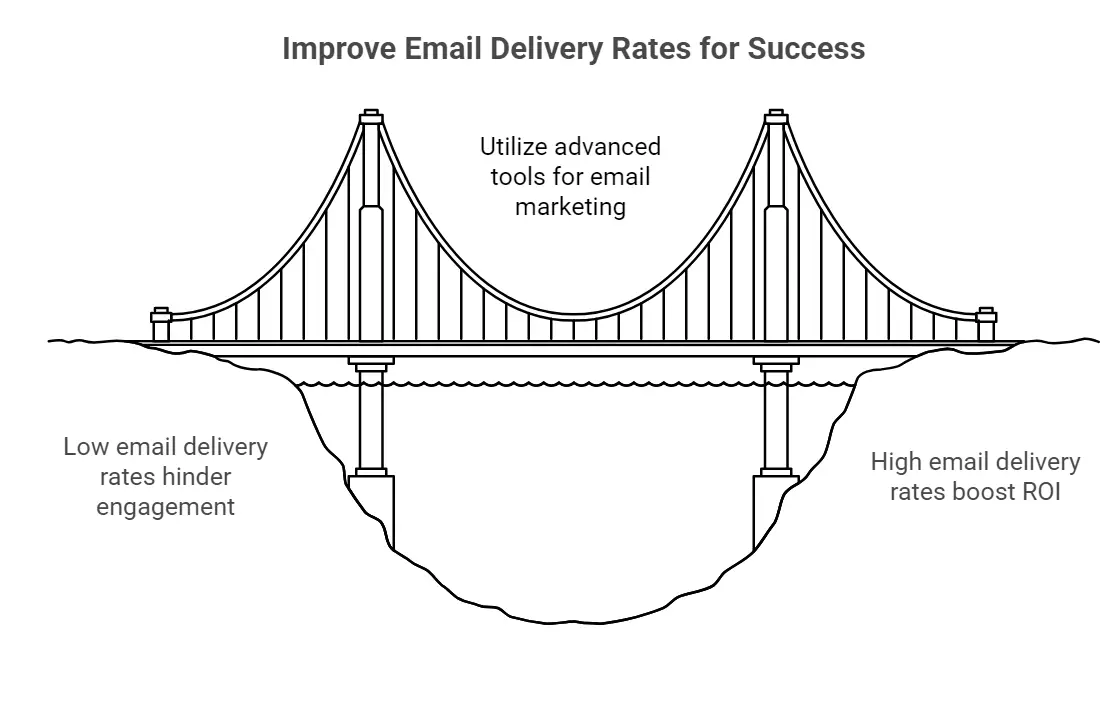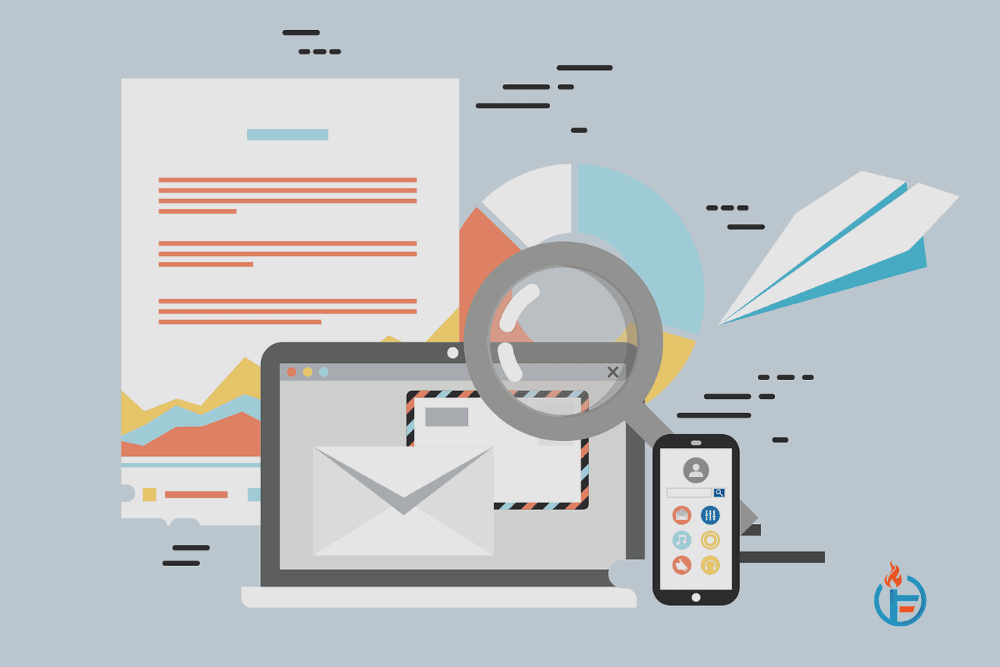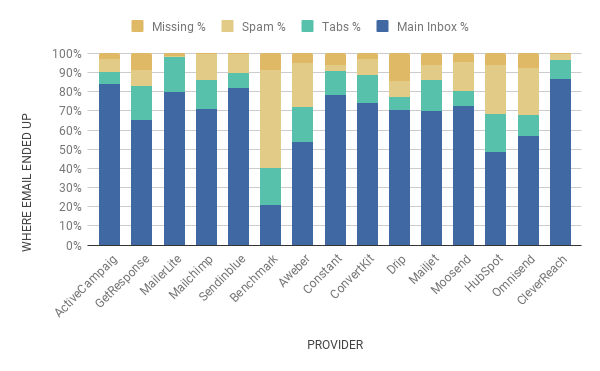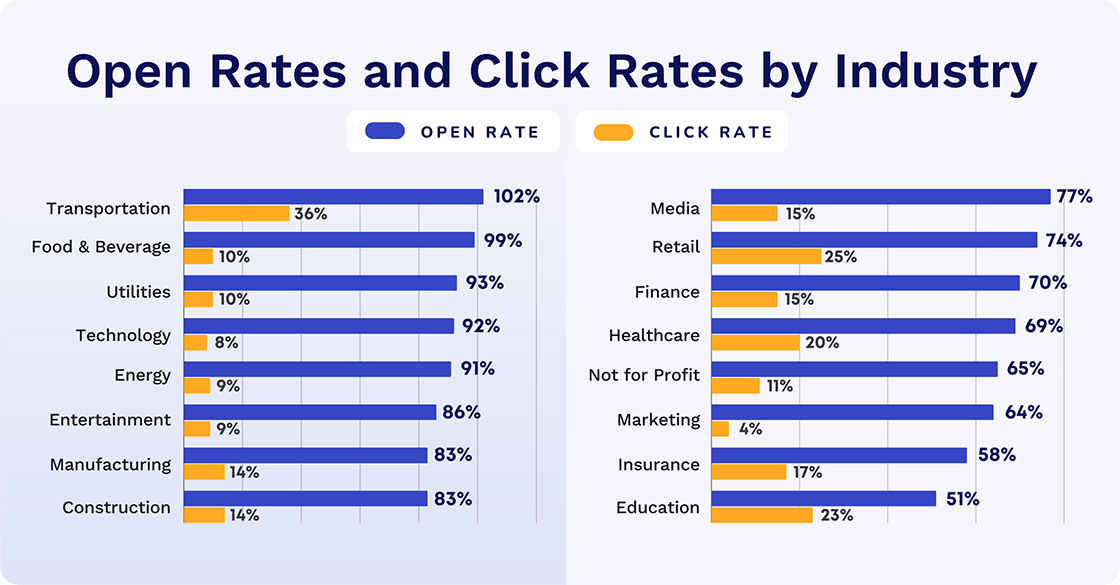Improving Email Delivery Rates: Strategies for Success
In the world of digital communication, improving email delivery rates is crucial for businesses looking to reach their audience effectively. High email delivery rates ensure that your messages are not just sent but also received by your recipients’ inboxes, allowing for meaningful engagement and successful communication. This blog post will explore the various aspects of email delivery rates, why they matter, and provide actionable strategies to enhance them.
Understanding Email Delivery Rates

To truly grasp how to improve email delivery rates, it’s essential to have a foundational understanding of what these rates mean and why they are significant to your email marketing strategy.
Definition of Email Delivery Rates
Email delivery rates are a measure of how many emails land in your subscribers’ inboxes out of the total sent. High delivery rates mean your communication reaches its audience, while low rates signal problems that require immediate attention.
Delivery rates are different from open rates and click-through rates, which measure how many recipients opened your email or engaged with its content. While these metrics are important for evaluating the overall success of your email marketing campaigns, focusing on delivery rates helps you understand the initial step of getting your emails into the inbox.
Importance of High Email Delivery Rates

High email delivery rates are essential for several reasons. Firstly, they directly affect your return on investment (ROI). When emails do not reach your subscribers, you lose out on potential sales and engagements. Secondly, maintaining high delivery rates builds your sender reputation. Internet Service Providers (ISPs) monitor sender behavior and can block or filter emails based on past performance. Thus, consistently high delivery rates contribute to long-term success in email marketing.
Furthermore, high delivery rates lead to increased brand visibility and awareness. The more your emails land in inboxes, the more opportunities you have to engage your customers with your brand message, promotions, and valuable content.
Factors Influencing Email Delivery Rates
Several factors can influence email delivery rates, including:
- Sender Reputation: A sender’s reputation depends on your email’s content, engagement rates, and past behavior. Avoid spammy practices to maintain a trustworthy reputation with ISPs.
- Content Quality: Personalized and engaging content ensures your emails resonate with recipients, boosting interaction and avoiding spam filters.
- List Hygiene: A clean email list – one composed of engaged subscribers who have opted in – will improve your chances of achieving high delivery rates.
- Technical Configurations: Proper technical setups, such as SPF, DKIM, and DMARC authentication, help establish trust with ISPs and can significantly impact your delivery success.
Understanding these factors allows marketers to tailor their strategies effectively, ensuring that their emails not only reach their audience but are also welcomed.
While understanding the factors influencing email delivery rates is crucial, utilizing dedicated tools can provide the support and insights needed to implement these strategies effectively. Leveraging advanced tools can greatly simplify and optimize your email marketing efforts. Below are two essential tools for ensuring effective email delivery:
GetResponse is an all-in-one email marketing platform designed to help you create engaging campaigns and improve deliverability. It features advanced automation, list segmentation, and analytics, ensuring your emails reach the right audience at the right time. The platform also supports A/B testing, helping you refine your content for maximum engagement.
ActiveCampaign combines email marketing with CRM and automation to provide a comprehensive solution for customer communication. It offers detailed analytics, predictive sending, and integration with other tools to maximize deliverability and improve customer engagement. ActiveCampaign’s robust segmentation capabilities allow you to deliver personalized content, boosting open and click-through rates.
Best Practices for Ensuring Successful Email Delivery

Achieving high email delivery rates requires adherence to best practices that enhance your email marketing efforts. Here, we’ll explore effective strategies for maintaining a healthy email list and ensuring emails reach their destination.
Building a Clean and Engaged Email List
One of the cornerstones of improving email delivery rates is building a clean and well-maintained email list. An engaged email list is composed of individuals who have willingly subscribed to receive communications from you.
Building this kind of list begins with transparency. When subscribers know what type of content they will receive, they are more likely to stay engaged. Use sign-up forms that clearly articulate what subscribers can expect, whether it’s newsletters, promotional offers, or updates.
Additionally, focus on attracting quality leads rather than quantity. Avoid purchasing email lists or adding unverified contacts without their consent, as this can lead to higher unsubscribe rates and spam complaints. Instead, employ tactics like lead magnets, such as offering free resources or discounts in exchange for email addresses. This approach ensures that those on your list are genuinely interested in your offerings.
Implementing Double Opt-In Procedures
Another effective strategy for maintaining a clean email list is implementing double opt-in procedures. This means that after a user subscribes to your list, they receive a confirmation email that requires them to verify their subscription before they start receiving regular communications.
The benefits of using a double opt-in process are manifold. It reduces the likelihood of fake or mistyped email addresses entering your list. By confirming their interest, you ensure that the recipients are genuinely engaged, which can lead to improved open rates and decreased bounces, factors that positively affect your overall delivery rates.
Moreover, double opt-in processes demonstrate professionalism and build trust with your audience. Subscribers appreciate the extra step, knowing that you value their consent and privacy.
Regularly Updating and Maintaining Your Email List
Regular maintenance of your email list is fundamental in ensuring high delivery rates. Over time, subscribers may change email addresses, lose interest, or abandon accounts altogether. Keeping your list updated involves periodically reviewing and cleaning your email database.
Begin by analyzing engagement metrics. If specific subscribers haven’t opened your emails in months, consider sending re-engagement campaigns. These targeted campaigns can encourage inactive subscribers to interact with your content or allow them to opt-out if they’re no longer interested.
Additionally, remove hard bounces immediately. Hard bounces occur when an email cannot be delivered due to a non-existent address. Continually sending emails to bad addresses can tarnish your sending reputation and decrease your delivery rates.
Segmenting Your Audience for Better Engagement
Segmentation is an invaluable practice in email marketing. By categorizing your audience based on demographics, behaviors, or interests, you can send more personalized and relevant content. This tailored approach not only enhances user experience but also leads to higher engagement levels.
Segmenting enables you to craft targeted messages that resonate more deeply with smaller groups. For example, you might send promotional offers to frequent buyers while sharing valuable content with those who have engaged but not yet purchased. This level of personalization can lead to increased open rates, clicks, and ultimately positive impacts on your delivery rates.
Further, segmentation allows for cleaner data management. By sending emails to smaller, more focused groups, you can reduce the likelihood of high bounce rates, spam complaints, and unsubscribes all of which are detrimental to your sender reputation.

Technical Considerations for Email Delivery
While best practices lay the groundwork for successful email delivery, technical considerations also significantly influence your rates. Addressing the technical aspects of your email system can set you apart from competitors.
Authentication Protocols: SPF, DKIM, and DMARC
Authentication protocols like SPF, DKIM, and DMARC act as digital signatures for your emails, ensuring ISPs trust your messages and deliver them to inboxes.
SPF is a record that helps prevent spammers from sending unauthorized emails on behalf of your domain. When you configure SPF, you designate which IP addresses are permitted to send emails for your domain.
DKIM adds a digital signature to your outgoing emails, allowing the recipient’s server to verify that the email was indeed sent from your domain and hasn’t been altered in transit.
DMARC ties both SPF and DKIM together, providing instructions to receiving servers about how to handle emails that fail either authentication method. Implementing these measures can significantly increase your legitimacy in the eyes of ISPs and improve your chances of landing in the inbox rather than the spam folder.
Choosing the Right Email Service Provider (ESP)
Selecting an appropriate email service provider (ESP) plays a pivotal role in your email deliverability journey. An effective ESP not only provides the tools needed for sending campaigns but also ensures that best practices for deliverability are followed.
When researching ESPs, pay attention to their reputation within the industry. Look for providers with strong relationships with major ISPs, as they are more likely to have established protocols for maintaining high delivery rates.
Additionally, investigate the features offered by each ESP. Tools that include automation, segmentation capabilities, robust analytics, and support for authentication protocols can greatly enhance your email campaigns and delivery rates.
Lastly, consider the customer service options provided. Having responsive support when troubleshooting delivery issues can make a significant difference in how quickly you can resolve problems and maintain high standards.
Monitoring IP Reputation and Blacklist Status
Monitoring your sending IP’s reputation is paramount for achieving successful email delivery. ISPs assign a reputation score based on various factors, including complaint rates, bounce rates, and engagement metrics, and this score influences whether your emails reach inboxes or get filtered as spam.
Regularly check your IP reputation using online tools that assess your sender score. If your reputation takes a hit, take immediate steps to rectify the situation. This might involve cleaning up your email list, sending targeted re-engagement campaigns, or reducing mailing frequency until your reputation improves.
Moreover, routinely check if your IP address is listed on any blacklists. Being on a blacklist can severely hinder your delivery rates. If you find yourself on one, familiarize yourself with the removal process and implement changes to ensure that you do not end up back on that list.
Ensuring Proper Email Formatting and Content Quality
Beyond technical protocols, the formatting and quality of your email content also significantly impact delivery rates. Emails should be visually appealing, easy to read, and properly formatted for mobile devices.
Ensure that your emails are optimized for all devices by using responsive design techniques. Statistics show that a significant portion of email opens occurs on mobile devices, so having a mobile-friendly layout is crucial for maximizing engagement.
Content quality matters as well. Avoid overly promotional language and instead provide value to your readers. Incorporate engaging visuals, informative articles, and compelling calls-to-action (CTAs) to encourage interaction. Delivering high-quality content improves user engagement, thereby fostering a positive relationship with your subscribers and supporting better delivery outcomes.
Analyzing and Improving Email Performance

To continuously improve your email delivery rates, it’s essential to analyze your campaigns regularly. Understanding performance metrics allows you to make informed decisions and optimize future strategies.
Utilizing Analytics Tools to Track Delivery Rates
Monitoring and analyzing email performance metrics through analytics tools is vital for understanding your delivery rates. Metrics such as delivery rates, bounce rates, open rates, and click-through rates provide insight into how well your emails perform.
Most ESPs offer built-in analytics features that allow you to track these metrics easily. Set benchmarks for your campaigns and regularly evaluate your performance against these targets.
By identifying trends over time, you can ascertain what types of emails resonate most with your audience, which times yield the highest engagement, and where drop-offs occur. This insight empowers you to refine your strategies and adjust your approach to maximize delivery rates.
A/B Testing Subject Lines and Content
A/B testing is a powerful method for improving the effectiveness of your email campaigns. By comparing two variations of an email, whether it’s the subject line, content, or design, you can determine which version yields better results.
Start small by experimenting with subject lines. Test different wording styles, lengths, or even emojis to see which resonates most with your audience. Since the subject line is often the first impression a subscriber has, optimizing this element can lead to higher open rates and subsequent engagement.
Once you’ve honed your subject lines, expand your testing to email content. Experiment with different layouts, images, CTAs, and copywriting styles. Analyze the results to determine which elements foster greater engagement and drive better delivery rates.
Learning from Bounce and Spam Reports
Bounces and spam reports provide critical insights into the health of your email list and content. Hard bounces indicate that your message could not be delivered, typically due to incorrect email addresses. As mentioned earlier, promptly removing these addresses from your list is essential to maintain a good sender reputation.
Soft bounces occur temporarily; they may be due to full mailboxes or temporary server issues. Monitor these occurrences and develop a plan for following up with soft bounces after a period of time.
Spam reports are another vital metric to watch. High spam complaint rates can have severe consequences for your sender reputation and delivery rates. Always review feedback loops provided by ISPs to understand the reasons behind spam complaints, and adapt your strategy accordingly. Ensure your emails provide genuine value, and never resort to misleading tactics to gain engagement.
Maintaining Compliance with Email Regulations

In an era where data privacy and protection are at the forefront of consumer concerns, staying compliant with email regulations is crucial. Not only does compliance build trust with your audience, but it also prevents costly penalties.
Understanding GDPR and CAN-SPAM Requirements
Familiarizing yourself with regulations like the General Data Protection Regulation (GDPR) and the Controlling the Assault of Non-Solicited Pornography And Marketing (CAN-SPAM) Act is essential for ethical email marketing practices.
The GDPR mandates that businesses obtain explicit consent from subscribers before sending marketing emails and requires transparency regarding how personal data will be used. Failure to comply can lead to hefty fines and damage to your reputation.
On the other hand, the CAN-SPAM Act sets rules for commercial emails, including requirements for providing clear unsubscribe options and accurate sender information. Understanding these regulations helps you create a compliant framework for your email marketing practices, thus safeguarding your reputation and delivery rates.
Providing Clear Unsubscribe Options
Providing clear and accessible unsubscribe options in your emails is not just a legal requirement; it also showcases your commitment to respecting your subscribers’ preferences. Make the unsubscribe link easily visible and straightforward to use.
When subscribers feel empowered to manage their preferences, they are less likely to report your emails as spam. A hassle-free unsubscribe process fosters trust and respect, enhancing your brand image and preventing negative repercussions on your sender reputation.
Securing Customer Data
Data security is integral to maintaining compliance and building customer trust. Employ encryption methods to protect sensitive information and ensure that your email platform complies with relevant security standards.
Regularly audit your data storage and handling practices to safeguard customer information. By demonstrating a commitment to data security, you instill confidence in your subscribers and foster lasting relationships that contribute to better email delivery rates.
Conclusion
Improving email delivery rates is a multifaceted endeavor that requires attention to detail, strategic planning, and continuous analysis. From understanding the importance of delivery rates to implementing technical measures and adhering to compliance regulations, every aspect plays a significant role in shaping your email marketing success.
By building a clean and engaged email list, utilizing best practices, leveraging technical considerations, and analyzing performance metrics, you position your email campaigns for success in reaching the intended audience.
Ultimately, prioritizing improving email delivery rates leads not only to enhanced engagement and conversions but also facilitates stronger connections between your brand and your audience. Start implementing these strategies today, and witness the positive impact on your email marketing initiatives.




